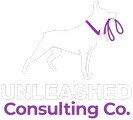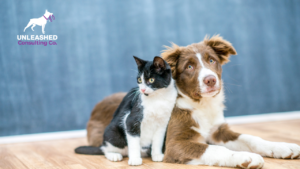The pet services market is booming, with pet spending reaching new heights every year. In fact, more people are treating their pets like family members and are willing to invest in high-quality services for their furry friends.
To succeed in the pet marketing industry, you need a well-thought-out pet marketing strategy to attract new customers, build brand awareness, and drive business growth.
In this article, we will provide a step-by-step guide on how to launch an effective pet marketing campaign.
Whether you’re a dog trainer, groomer, or pet sitter, these 8 ways on how to launch a successful pet marketing campaign will help you create a marketing plan that resonates with pet owners and gets results.
8 Tips For an Effective Pet Marketing Campaign
1. Understand Your Target Audience
Before launching a pet marketing campaign, it’s important to understand who you’re trying to reach. Knowing your target audience helps you create marketing messages that speak directly to their needs and interests, making it more likely they’ll choose your services.
a. Identify Your Target Market
The first step to launch a successful pet marketing campaign is to figure out who your ideal customers are. For pet businesses, this can vary based on the services you offer. For example, your target market could include:
- Age: Are you targeting younger pet owners who are tech-savvy, or older pet owners who prefer in-person services?
- Pet Ownership: What types of pets do they have? Are they dog owners, cat owners, or maybe owners of exotic pets like reptiles or birds?
- Interests and Lifestyles: Some pet owners may be interested in health and wellness for their pets, while others might focus on training, grooming, or daycare. Knowing these details helps you tailor your marketing messages to what matters most to them.
By understanding these characteristics, you can build a clear picture of who your customers are and create more personalized marketing campaigns.
b. Know Your Target Audience Needs
Pet owners have specific needs that influence their decision-making. It’s important to understand what they’re looking for when they hire a pet service.
- Convenience: Many pet owners are busy and value services that make their lives easier, such as mobile grooming, flexible booking times, or at-home training sessions.
- Pet Safety: Pet owners want to ensure their pets are in good hands. Highlighting how your business prioritizes pet safety, with trained professionals and secure environments, will resonate with them.
- Quality Services: Pet owners are often willing to pay more for high-quality services, whether it’s premium pet grooming or personalized training. Showcasing your expertise and offering excellent service can help build trust with potential clients.
By identifying and addressing these needs, you can ensure your marketing speaks directly to what your customers care about the most.
c. Segment Your Audience
Not all pet owners are the same, so it’s helpful to segment your audience into different groups based on their pets, interests, and needs. This allows you to craft more targeted marketing messages.
- Dog Owners: They may be looking for training, daycare, or grooming services.
- Cat Owners: They might be interested in cat boarding, health check-ups, or specialized grooming.
- Exotic Pet Owners: They could need care or supplies for reptiles, birds, or other non-traditional pets.
By breaking your audience into smaller groups, you can tailor your marketing campaigns to address the specific concerns and interests of each group. This makes your messages more relevant and increases the likelihood that pet owners will engage with your business.
2. Set Clear Goals for Your Campaign
When launching a pet marketing campaign, it’s important to have clear goals in mind. Setting goals helps you stay focused and gives you something to measure your success against.
Without clear objectives, it’s easy to get off track or waste resources on strategies that don’t work.
a. Define Objectives
Start by defining what you want to achieve with your marketing campaign. These objectives should be specific, measurable, and aligned with your overall business goals. Here are some common objectives for a pet business marketing campaign:
- Increase Brand Awareness: If your business is new or you want to reach more people, one of your main goals might be to increase awareness of your brand. This could mean making more people in your area aware of your services and what you offer.
- Drive Website Traffic: If you want more people to visit your website, set a goal to increase web traffic. More visitors to your website often leads to more potential customers discovering your services.
- Boost Conversions: If you’re focused on getting more people to take a specific action, like booking an appointment, signing up for a newsletter, or purchasing a service, your goal might be to increase conversions. This means you want to turn website visitors into paying customers.
Setting clear and measurable objectives helps you stay focused and lets you track progress over time. Make sure your goals are specific enough so that you can see if you’re achieving them. For example, instead of saying, “I want to get more clients,” say, “I want to get 20 new clients in the next 3 months.”
b. Establish KPIs (Key Performance Indicators)
Once you’ve set your goals, it’s time to establish Key Performance Indicators (KPIs) to measure how well your campaign is performing. KPIs are the specific metrics that will show whether you’re on track to meet your goals.
- Click-Through Rate (CTR): This tells you how many people are clicking on your ads or email links. A higher CTR means your ad or email is attracting interest and encouraging action.
- Customer Acquisition: This tracks how many new customers you gain from your campaign. It helps you understand how effective your marketing is at bringing in new clients.
- Sales Conversions: This measures how many people take the desired action (e.g., booking a service or purchasing a product) after engaging with your marketing efforts. High conversion rates indicate that your campaign is effective at turning leads into customers.
By tracking these KPIs, you’ll be able to see what’s working and what isn’t, allowing you to make adjustments as needed.
c. Align Goals with Business Objectives
Your marketing goals should always tie into the bigger picture of your business. It’s important to ensure that your marketing campaign is aligned with the overall direction of your business.
- Increasing Bookings: If your business goal is to increase bookings for dog training or grooming services, your marketing goal could be to drive traffic to your online booking system or increase awareness of special offers that encourage bookings.
- Expanding Client Base: If you want to grow your client base, your marketing goals should focus on reaching new customers, whether through social media ads, Google search ads, or local partnerships.
Aligning your marketing goals with your business objectives helps you ensure that every marketing action you take is moving you closer to growing your business.
3. Choose the Right Marketing Channels
Selecting the right marketing channels is crucial to effectively reach and engage your target audience.
Here’s an expanded look at the best marketing social media channels for promoting your pet business:
a. Social Media
Social media platforms are a powerful way to connect with pet owners, showcase your pet business services, and build brand awareness. Each social media platform has its own strengths:
- Facebook: With billions of active users, Facebook is an excellent platform for targeting local customers. You can create a business page, share updates, post promotions, and join local pet-related groups to engage with your community. Facebook Ads also allow for highly targeted advertising based on demographics, interests, and location, making it ideal for reaching people in your area who are interested in your pet services.
- Instagram: Share high-quality photos and videos of your services, happy pets, and customer testimonials. Instagram Stories and Reels are particularly effective for engaging with your audience in a fun and interactive way, such as sharing quick pet tips or showing behind-the-scenes content.
- TikTok: TikTok’s viral nature makes it a great platform for building awareness and engaging with a younger audience. Short, creative videos showcasing your services, pet training tips, or funny pet moments can help your business go viral, reaching a large audience quickly.
b. Email Marketing
Email marketing remains one of the most effective ways to nurture relationships with your customers. It allows you to stay in contact with both potential and existing clients.
- Lead Nurturing: Once someone expresses interest in your services (such as signing up for your newsletter or downloading a free resource), email gives you the chance to nurture that relationship. Regular emails with valuable content, such as pet care tips, success stories, or upcoming promotions, keep your business top of mind.
- Promotions and Offers: Email campaigns are a great way to share special promotions, discounts, or limited-time offers directly with your audience. For example, you could send out a discount for first-time customers or offer a special deal for loyal clients. Personalized email content can drive conversions and motivate customers to book your services.
- Customer Engagement: Regular communication through email can help you build stronger relationships with your audience. This leads to higher retention rates, more repeat bookings, and greater customer loyalty.
c. Google Ads & SEO
Google Ads and Search Engine Optimization (SEO) are two powerful tools for boosting your online visibility. Both help ensure that your business shows up in search results when potential customers are looking for pet services.
- Google Ads: Running paid ads on Google can instantly place your business in front of people searching for services like yours. Google Ads allows you to target specific keywords, locations, and audience interests, which can drive highly targeted traffic to your website. This is especially useful for businesses that want to quickly attract customers in a specific geographic area.
- SEO: SEO is a long-term strategy to improve your website’s ranking in organic (non-paid) search results. By optimizing your website with relevant keywords (such as “pet grooming in [city name]” or “dog training services near me”), you increase your chances of showing up when people search for your services. SEO involves improving your website’s content, structure, and performance to ensure search engines like Google can easily find and index your site.
4. Develop Compelling Content
Creating great content is one of the best ways to connect with your audience and build a strong relationship with pet owners. Whether it’s through visuals, customer stories, or your written content, compelling content helps show what makes your business special and why pet owners should choose you.
a. Create Engaging Visuals
Pet owners love to see cute, funny, or heartwarming images and videos of pets. Using high-quality visuals can help emotionally connect your audience to your brand.
- Photos: Share clear, well-lit photos of pets using your services, such as dogs during training sessions, cats being groomed, or pets enjoying your pet care facilities. Showing real pets and their owners helps make your business feel more personal and relatable.
- Videos: Videos are one of the most engaging types of content. Post videos of pets in action—like a dog mastering a new trick or a pet enjoying a spa day. Behind-the-scenes videos, such as showing how you care for the pets or the process of training, can also help build trust with potential customers.
- Stories: Sharing stories of pets you’ve helped or transformations you’ve been a part of can be incredibly powerful. You could feature customer success stories where their pets have shown improvement, whether in training, behavior, or health. These stories help your audience feel emotionally connected to your brand.
b. Write Engaging Copy
The words you use in your marketing can make a big difference in how potential clients perceive your business. When writing your marketing copy, make sure it’s persuasive and relatable to pet lovers.
- Focus on Benefits, Not Just Features: Instead of just describing what you offer, explain how it benefits the pet and the owner.
- Be Relatable: Pet owners care deeply about their pets, so make your copy reflect that understanding. Use language that shows you care about pets just as much as they do. For instance, instead of using formal language, try writing as if you’re speaking to a friend who loves pets too.
- Call to Action: Make sure your copy includes a clear call to action (CTA). This is a simple prompt telling your audience what you want them to do next.
5. Utilize Paid Advertising for Maximum Reach
Paid advertising is a powerful way to quickly expand your reach, drive traffic to your website, and convert leads into customers. By strategically using ads, you can ensure your pet business gets noticed by the right people.
a. Google Ads
Google Ads is one of the most effective ways to target people actively searching for pet services. By creating ads that show up when someone types in a related search term, you can attract high-intent leads—people who are already looking for services like yours.
- Target Specific Keywords: With Google Ads, you can target specific keywords related to your pet business. For example, if you run a dog training business, you can bid on keywords like “dog trainer near me” or “puppy training classes.” This way, your ad will show up when someone searches for those terms, increasing the chances they’ll click on your ad and visit your website.
- Capture High-Intent Leads: People who search for specific services, like pet grooming or dog training, are usually ready to make a decision. Google Ads lets you target these people at the moment they’re actively looking for what you offer.
b. Retargeting
Retargeting is an incredibly effective way to reach potential customers who have already shown interest in your pet business but haven’t yet converted into paying clients. With retargeting ads, you can remind them about your services and encourage them to take the next step.
- Reach Website Visitors Who Didn’t Convert: Sometimes, people visit your website, but they leave without booking a service or making a purchase. Retargeting allows you to show ads to these visitors as they browse other websites or social media platforms. For example, if someone visited your dog training page but didn’t sign up, you can retarget them with an ad offering a special promotion or a reminder of your services.
- Increase Conversion Rates: Since retargeting ads are shown to people who are already familiar with your business, they tend to have a higher conversion rate compared to cold leads. By keeping your business top of mind, you increase the likelihood that they’ll come back and book your services.
6. Build and Optimize Your Website
Your website is the online hub for your pet business. It’s where potential customers will go to learn more about your services and ultimately decide whether to book with you.
To make the most of your marketing efforts, your website needs to be well-designed, easy to use, and optimized for both search engines and visitors.
a. Landing Pages
A landing page is a dedicated web page designed for a specific marketing campaign. It’s where you send visitors after they click on an ad or a link from an email or social media. A great landing page helps guide the visitor toward a desired action, like signing up for your services, booking an appointment, or getting more information.
- User-Friendly Design: Use simple, concise language, and make sure all the necessary details about your services are easy to find.
- Conversion-Focused: Your landing page should have a clear call to action (CTA), like “Book Now” or “Get a Free Consultation.” This CTA should stand out on the page and encourage visitors to take immediate action.
- Consistency with Your Campaign: Make sure the design and message of your landing page align with the ad or social media post that directed visitors there. If your ad promotes a special discount on dog grooming, the landing page should reinforce that offer and make it easy for users to claim the deal.
b. Mobile Optimization
More and more people are browsing the internet on their mobile phones, and it’s essential that your website works well on these devices. Mobile optimization ensures that your website looks good and is easy to use on phones and tablets, which can make a big difference in whether visitors stay or leave.
- Responsive Design: A mobile-friendly website automatically adjusts its layout to fit smaller screens. This means your text, images, and buttons will be properly sized, making it easier for mobile users to read and navigate.
- Easy Navigation: Make sure menus, buttons, and forms are easy to use on a mobile device. If visitors can’t quickly find what they need or if the site is hard to navigate on a phone, they may leave before taking action. Simple, straightforward navigation is key for mobile users.
- Fast and Smooth Performance: Mobile users tend to have less patience for slow-loading pages. Make sure your website loads quickly on mobile devices to prevent users from getting frustrated and leaving.
c. Fast Loading Speed
The loading speed of your website can affect both user experience and your search engine rankings. A fast website is important for keeping visitors engaged and for showing up higher in search results like Google.
- User Experience: If your website takes too long to load, visitors may leave before they even see your content. A slow-loading site can create frustration, leading to higher bounce rates (when people leave without interacting). Fast-loading pages ensure users can access information quickly and smoothly.
- SEO Rankings: Google and other search engines take website speed into account when ranking pages. A website that loads slowly may be penalized in search rankings, meaning fewer people will find you online. Optimizing your website for speed can help improve your visibility in search results.
7. Track, Measure, and Optimize Your Campaign
Once you’ve launched your pet marketing campaign, it’s important to track its performance and make adjustments to improve results.
a. Use Analytics
Analytics tools like Google Analytics provide valuable insights into how your website and marketing campaigns are performing. These tools track various metrics that help you understand how visitors interact with your website and ads.
- Monitor Traffic: Google Analytics shows you how many people are visiting your website, where they’re coming from, and which pages they visit. For example, if you’re running ads on Facebook or Google, you can see if those ads are driving traffic to your site.
- Track Conversions: Conversions are the actions you want visitors to take, such as booking a pet grooming appointment, signing up for a newsletter, or purchasing a service. Analytics tools can track these actions, showing you how well your campaign is converting visitors into customers.
- Understand User Behavior: Analytics also lets you see how users are interacting with your site. Are they spending time on your service pages, or are they leaving right away? Are they clicking on the “Book Now” button? Understanding user behavior helps you identify areas for improvement.
b. A/B Testing
A/B testing (also called split testing) involves comparing two versions of an element (like an ad, landing page, or call-to-action) to see which one performs better. This is an important step in optimizing your campaign and improving results.
- Test Different Ad Copies: When creating ads, you can test different versions of your ad copy to see which one grabs attention the most. For example, you could try two variations of a headline: “Get Your Dog Trained Today” versus “Transform Your Dog’s Behavior Now.” By testing these, you can find out which message resonates more with your target audience.
- Test Landing Pages: You can also create multiple versions of a landing page and see which one leads to more conversions. For instance, one page might have a special offer, while another emphasizes customer testimonials. A/B testing helps you determine which page layout or content encourages visitors to take action.
- Test Calls-to-Action (CTAs): The CTA is one of the most important parts of any marketing campaign. It tells your audience what to do next (e.g., “Book Now” or “Get Your Free Consultation”). You can test different CTAs to see which one drives the most clicks. A small change in wording or design can significantly impact your conversion rate.
8. Build Long-Term Relationships with Customers
Once you’ve successfully attracted customers to your pet business, it’s important to build lasting relationships with them. Keeping your customers engaged and loyal will help your business grow, leading to repeat sales, positive reviews, and word-of-mouth referrals. Here’s how you can build long-term relationships with your customers:
a. Customer Retention
Customer retention is all about keeping your current customers happy and engaged with your services. It’s much cheaper and easier to keep a loyal customer than to find new ones. Here’s how you can improve customer retention:
- Ongoing Communication: Stay in touch with your customers even after they’ve used your services. You can send them regular updates about your business, new services, or upcoming promotions through email newsletters, social media posts, or text messages.
- Loyalty Programs: Offering a loyalty program is a great way to reward your customers for continuing to choose your services. Loyalty programs encourage customers to keep coming back and can increase their lifetime value to your business.
- Special Offers: Everyone loves a good deal, especially when they feel like they’re getting something exclusive. By offering special offers such as birthday discounts for pets or seasonal promotions, you can create an incentive for customers to continue using your services. Make sure to keep these offers fresh and exciting to maintain customer interest.
b. Referral Programs
Referral programs can help your business grow by turning satisfied customers into ambassadors who recommend your services to their friends, family, and social circles.
- Encourage Word-of-Mouth: People are more likely to trust recommendations from friends or family over advertisements. By creating a referral program, you encourage your happy customers to spread the word about your services. For example, you can offer a discount or free service to customers who refer a new client to your business.
- Make It Easy: The referral process should be simple for your customers. Provide them with easy-to-share referral links, social media posts, or printable cards that they can give to friends. The easier you make it, the more likely your customers will refer others.
- Offer Rewards: To motivate your customers to refer others, offer them rewards. For example, you could offer a free grooming session, discounts on services, or gift cards as a thank you for referrals. This shows your appreciation and encourages customers to spread the word about your business.
Conclusion
Launching a successful pet marketing campaign takes careful planning, creativity, and consistency. By understanding your target audience, setting clear goals, choosing the right marketing channels, and creating engaging content, you can effectively reach pet owners and grow your business.
Don’t forget the importance of using paid advertising, optimizing your website, and continuously tracking your campaign’s performance. Most importantly, focus on building long-term relationships with your customers through loyalty programs, referrals, and community engagement.
If you’re ready to take your pet business to the next level, Unleashed Consulting is here to help.
Whether you need help with social media marketing, paid ads, or creating effective campaigns, we’re here to guide you every step of the way.
Contact us today to start your journey toward a successful pet marketing campaign!






